When skillfully created, illustrations are powerful tools for brand development, utilizing colors and shapes as strategic elements. A compelling illustration goes beyond mere decoration it plays a crucial role in shaping a brand’s identity and influencing consumer perceptions.
These visual creations carry deep emotional significance, acting as a bridge between your audience and your brand. They can shape how users view your products, projecting an image of energy or even irrelevance. While blindly chasing every trend may not ensure success, staying informed about these trends is essential. They offer valuable insights into shifting consumer preferences. Incorporating specific trends into your business strategy can effectively capture and engage your target audience.
The world of illustration trends has been in constant flux in recent years, paving the way for new artistic expressions. Looking ahead to the trends predicted for 2025 reveals a mix of timeless aesthetics and bold, innovative approaches. Keeping up with these evolving trends in illustration is a strategic way to stay ahead of the competition.
This article serves as a guide through the evolving landscape of illustration trends, highlighting the key shifts expected to shape the design industry in the coming year. Explore it to gain a complete understanding of the creative directions poised to influence the design world, particularly if you’re in search of cutting-edge book illustration services. these trends, your brand can tell a story that resonates deeply, leaving a lasting impression on your audience.
Why illustrations are so useful for creatives
Illustrations are an invaluable asset for creatives, offering a powerful combination of flexibility, creativity, and practicality that other mediums often can’t match. Whether you’re involved in branding, web design, or crafting marketing materials, illustrations can enhance your project in a personal and captivating way.
- Visual storytelling: Illustrations have the ability to communicate complex ideas or emotions in ways that transcend the limitations of reality. Unlike photography, which captures existing subjects, vector illustrations provide boundless creative freedom, enabling you to craft visuals that are dynamic, imaginative, and impactful.
- Scalability with vector graphics: A key benefit of using vector graphics is their scalability. No matter the size whether it’s a small web icon or a large billboard vector illustrations maintain their sharpness and quality. This makes them ideal for everything from logos to expansive designs, ensuring versatility across a range of platforms.
- Brand uniqueness: Custom illustrations offer a fantastic opportunity to develop a unique brand identity. Vector illustrations can be meticulously tailored to align with your brand’s voice, ensuring your visuals stand out, and leaving a memorable and distinct impression on your audience.
- User engagement: Incorporating illustrations into web design or apps can transform user experiences into something more engaging and enjoyable. Skillfully placed vector graphics guide users, clarify processes, or simply make a platform feel more welcoming, all while enhancing user interaction and involvement.
To sum up, illustrations especially in the form of vector graphics offer creatives the opportunity to move beyond the constraints of the real world, develop one-of-a-kind designs, and ensure their work stands out, no matter the format or scale.
With this in mind, let’s explore 17 illustration styles that are predicted to dominate in 2025.
Most Creative and Inspiring Illustration Trends in 2025
A standout illustration trend on the horizon for the upcoming year revolves around Nostalgia. this trend means expertly using a retro color palette, weaving in iconic 90s-inspired elements, incorporating 3D animation, and adopting fonts from past decades. These illustrations possess a special ability to evoke emotions, harnessing nostalgia to create positive and memorable connections with users.
This trend focuses on tapping into emotions tied to deeply rooted memories, often linked to childhood. By drawing on familiar concepts and imagery, these illustrations make a strong emotional impact, leaving a lasting impression on the audience. The most talented illustration artists are those who continuously seek inspiration, always exploring new styles that allow them to tell fresh and engaging stories.
We’ve gathered 17 styles that have truly inspired our creativity. While honoring past trends, these styles bring a playful, modern twist perfect for 2023. They’re excellent tools to keep in your creative toolkit for the year ahead. Whether you’re designing for branding, marketing, or storytelling, these trends are sure to engage and inspire.
1. Vintage and Retro:
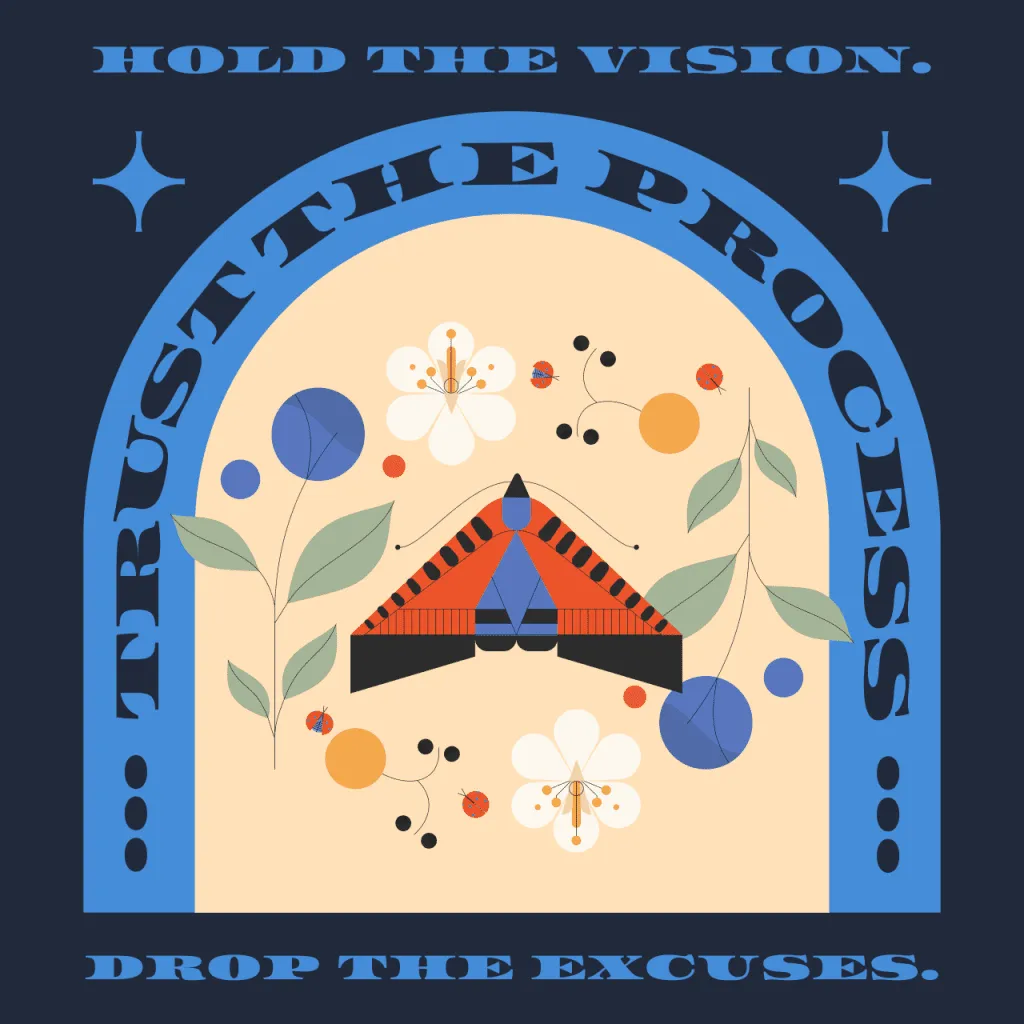
Image Source: Design Stripe
Illustrations inspired by the early 20th century are experiencing a remarkable resurgence in popularity. During the 1930s, the lack of modern technology necessitated a slower, more intentional design process, resulting in vibrant creations that have stood the test of time.
Today, this nostalgic aesthetic has become more accessible than ever. Thanks to the widespread availability of retro filters in social media tools and design software, the vintage style has made a striking comeback. Modern web projects are increasingly adopting classic color palettes, weaving this retro charm into their designs.
A key element of this vintage revival is the use of illustrated fonts. Brands are breathing new life into these timeless designs by incorporating their unique color schemes, adding a contemporary twist to a classic art form. This enduring design trend continues to engage audiences, offering a timeless and elegant touch to any creative project.
2. Psychedelic:
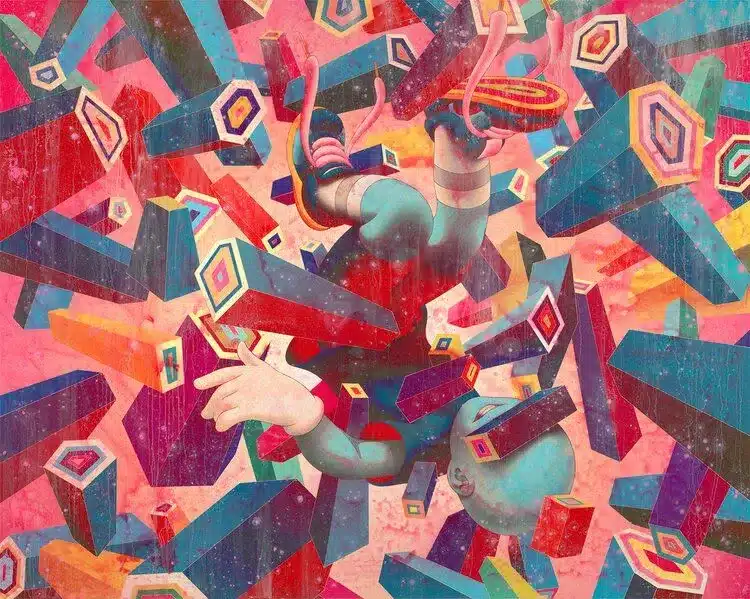
Image Source: James Jeans
The term “psychedelia” refers to the psychedelic subculture of decades past, while “psychedelic” more specifically describes the experience of an altered state of consciousness. In the context of design aesthetics, however, the two terms are often used interchangeably.
Currently, abstract psychedelia is making a bold resurgence as one of the standout trends in 2021 design. While this style continues to evolve today, its origins trace back to the iconic Swinging Sixties. Emerging from the music and art of the 1960s, psychedelia is deeply tied to the use of hallucinogens and creative experimentation, all set against a backdrop of social and cultural upheaval. Both visually and emotionally, psychedelic style transports viewers to uncharted territories, with the ultimate aim of expanding the mind. Psychedelic designs and artworks possess a dynamic, almost living quality, characterized by their vibrant arrangements and intricate complexity so much so that no two encounters with the same piece ever feel exactly alike.
3. Cartoons:
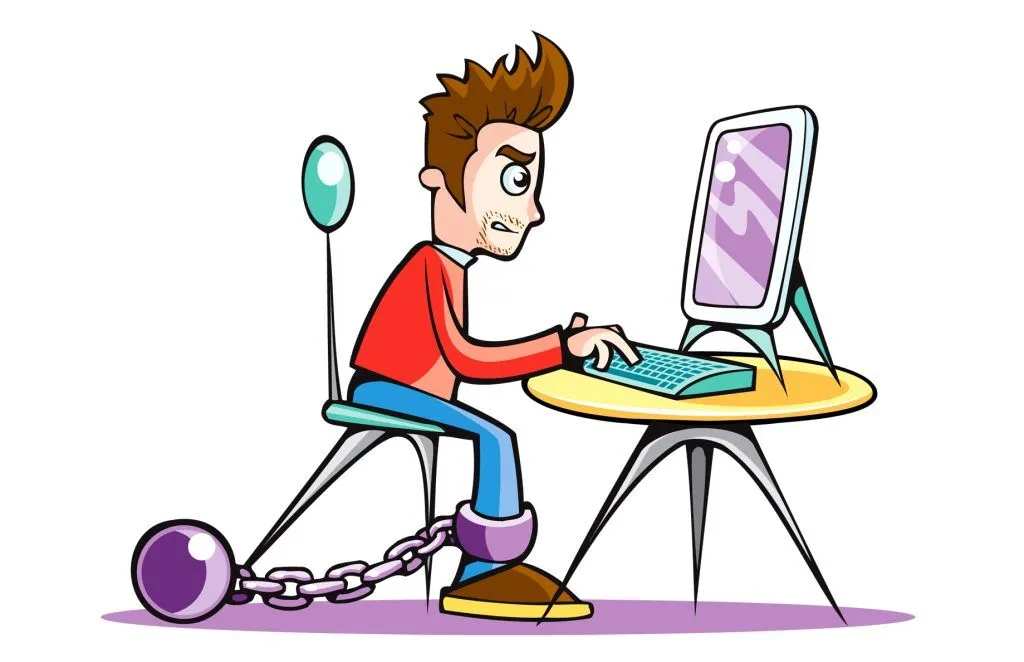
Image Source: Cartoons by Barry
Cartoon design embodies lively and unique illustrations, often infused with humor and charm. It’s defined by bold, colorful drawings that typically feature characters and tell stories. Choosing cartoon design injects personality and playfulness into your work, making it a standout alternative to traditional graphics or photography. Illustrations, particularly cartoons, create a friendly and approachable vibe, helping to make messages more engaging and relatable.
The term “cartoon modern” was popularized in the 1950s by designer Saul Steinberg, gaining traction in the 1960s and 70s with the rise of computer graphics and innovative techniques that a clean, minimalist aesthetic. Notable artists who have contributed to this style include Steve Ness, James Stewart, and Herb Emery.
Cartoons are frequently used by artists to simplify complex ideas, making them more accessible and easier to understand. In many cases, the visuals alone are powerful enough to communicate the message effectively, eliminating the need for words.
4. Realism:
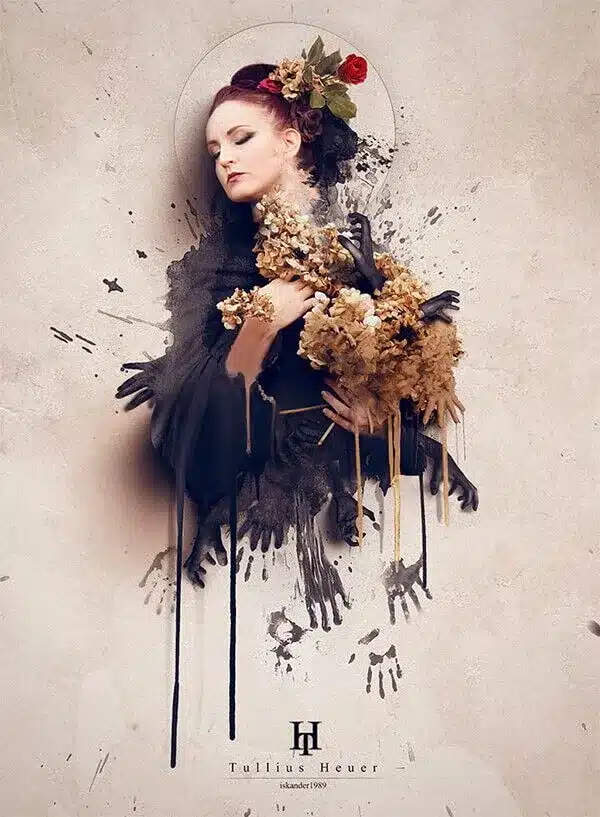
Image Source: Design Swan
Realism is an illustration style defined by its meticulous and precise portrayal of nature or life, free from exaggeration or embellishment. It focuses on careful observation of outward appearances, steering clear of the imaginative idealization often seen in other artistic approaches. By prioritizing authenticity and attention to detail, realism captures the essence of its subjects with striking clarity and depth, making it a timeless and impactful choice for artists and audiences alike.
While realism has been a longstanding favorite, it’s set to gain even more traction in 2024 illustration trends. Dreamlike imagery, infused with a surreal touch, will bring heightened creativity and flair to this style. Though considered a niche trend, applying realism effectively while understanding the preferences and mindset of the target audience can produce stunning and impactful results.
At its core, realism aims to depict reality in a natural, unadorned way, capturing subjects in a way that closely mirrors what the human eye perceives. While mastering this style can be challenging, it offers a deeply rewarding way to highlight the inherent beauty of the real world. For artists looking to excel in realism, leveraging visual A.I. tools could provide a significant edge a topic we’ll explore in more detail later.
5. Surreal:
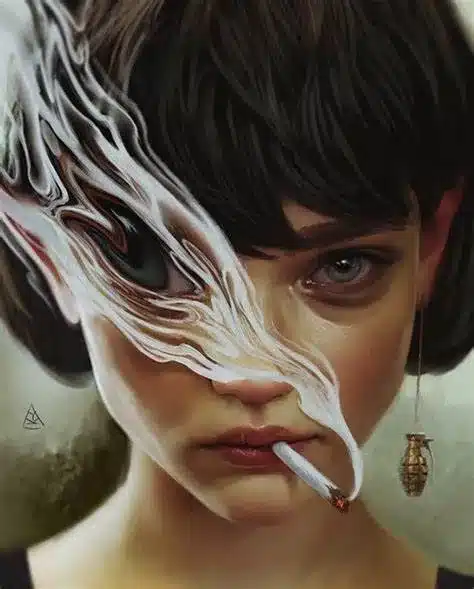
Image Source: Webneel
Surreal illustrations, celebrated for their dreamlike and often irrational imagery, are typically created through painting, drawing, or mixed media. These artworks bring to life fantastical or bizarre scenes, designed to provoke thought and explore the depths of the subconscious mind. Iconic surrealist illustrators like Salvador Dalí and René Magritte have left an indelible mark on this genre, shaping its evolution and influence.
The surreal style possesses a unique ability to convey messages that transcend the boundaries of the real world. These illustrations often resemble dreamscapes, blending elements that would never naturally coexist. This artistic approach represents a fusion of various illustration styles and techniques, offering artists the freedom to experiment with emerging drawing trends. Its capacity to distill complex ideas into visually compelling narratives makes surrealism a powerful tool, particularly when paired with AI tools. This combination allows for the transformation of abstract concepts into tangible visual realities, pushing the boundaries of creative expression even further.
6. Line Art:
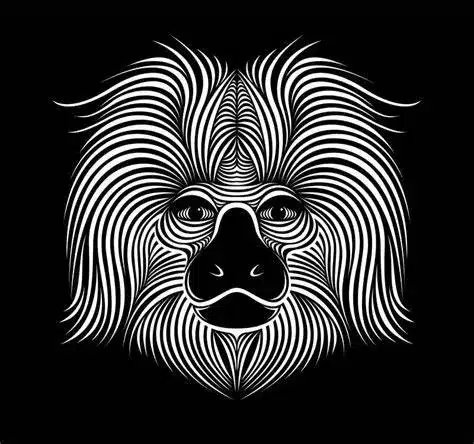
Image Source: Design Bolt
Before the advent of photography and halftone printing, line art was the go-to illustration format in print media, typically created with black ink on white paper. Through techniques like stippling and hatching, artists could simulate varying shades of gray, adding depth and texture to their work.
Line art is a style of illustration that relies on lines, shapes, and patterns to create a clean, minimalist aesthetic. It’s a versatile medium, capable of expressing a wide range of emotions and ideas. Whether drawn with pencils, markers, or digital tools, this monochromatic art form is defined by lines of varying weights or thicknesses, often presented in black and white or a single color against a solid background.
A key characteristic of line art is its ability to define boundaries. Lines can outline the edges of two-dimensional shapes or trace the contours of three-dimensional forms. They can create shapes through simple outlines or bring depth to figures using contour lines, making line art a fundamental and timeless technique in visual storytelling.
7. Classique:
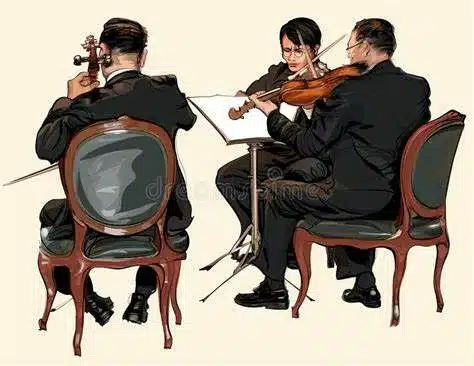
Image Source: fr.dreamstime
Classique Illustration, rooted in 19th-century Europe, represents a distinctive art style celebrated for its intricate and highly detailed depictions, with a particular focus on texture, shading, and meticulous craftsmanship. Esteemed artists such as Gustave Doré and Alphonse Mucha are iconic figures within this genre, known for their elaborate and visually rich creations. Historically utilized in books, comics, and advertising, this artistic approach has experienced a resurgence, becoming a defining feature of modern illustration trends in 2023. Its enduring influence continues to inspire illustrators across diverse creative fields.
In recent years, major brands like Nike and New Balance have embraced this illustrative style, integrating it into their campaigns. By pairing editorial fonts with meaningful, detailed visuals, they have effectively communicated powerful narratives, echoing the communicative depth of Classique illustration. This trend mirrors the enduring legacy of iconic publications like The New Yorker, underscoring the timeless relevance and impact of this art style in illustration and design.
8. Colors of the ‘90s:
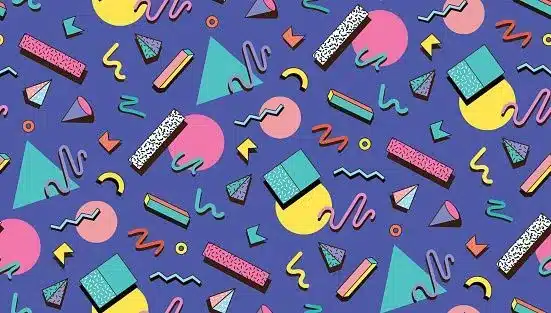
Image Source: Pinterest
Creating nostalgia through design often involves drawing inspiration from the past, and using illustrations to evoke a sense of familiarity and sentimentality. Retro or vintage styles, such as pixel art, flat design, or pop art, are particularly effective in capturing the essence of specific eras or cultural moments.
The 1990s, though still fresh in the memories of many, have now become a nostalgic reference point. The vibrant color palettes of that decade instantly bring to mind iconic imagery from MTV, beloved cartoons, and memorable advertisements. For those who vividly recall the charm of ’90s cartoons, this illustration trend feels like a joyful journey back in time.
Nostalgia illustration is an art form that celebrates a deep affection for the past, invoking emotional connections to moments, places, or people from bygone times. It’s a medium that wistfully captures memories and emotions tied to specific periods in one’s life. Whether created through watercolors, oils, or digital tools, these illustrations vividly convey feelings of happiness, melancholy, or joy, reflecting the settings and subjects they depict. Widely used in graphic design, branding, packaging, and personal art, nostalgia illustrations serve as powerful tools for evoking profound emotions, resonating deeply through their heartfelt portrayals of cherished memories.
9. 3D Animation:
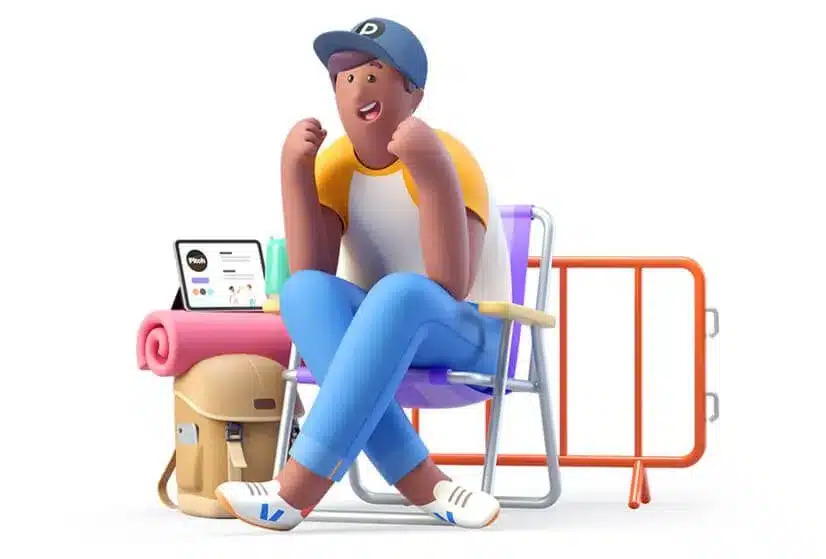
Image Source: Graphic mama
Exploring diverse styles such as realism, photorealism, surrealism, “cartoony animation,” anime, and collages can significantly improve your product’s visual appeal. Consider leveraging 3D modeling services to create custom 3D animation art that aligns perfectly with your business needs.
As technology advances, more designers are adopting 3D techniques, thanks to their growing accessibility. Tools like Spline and Womp now allow for 3D design directly within web browsers, making it easier than ever to experiment with this medium. This is also an excellent opportunity to highlight the convenience of in-browser mockups, which streamline the design process. The use of 3D design allows for the portrayal of dynamic and impactful concepts. The added depth and dimensionality bring even the simplest shapes and textures to life, creating visuals that naturally draw attention and stand out. When elements appear to leap off the page, they engage viewers.
Incorporating 3D is particularly transformative for showcasing products and hero images on websites, but its applications extend far beyond that. As technology continues to evolve, 3D design is expected to grow in popularity throughout 2023 and beyond, solidifying its place as a powerful tool in the creative landscape.
10. Textures:
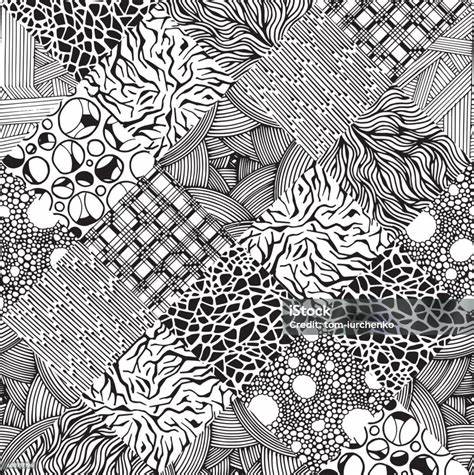
Image Source: iStock
Texture illustration involves the digital creation of patterns or designs by manipulating image textures or surface properties. This artistic technique is widely used in fields such as 3D rendering, product design, and game development. Illustration textures come in various forms, including grids, noise, wood, metal, and more, each serving to add a realistic or stylized appearance to surfaces within an artwork.
As a subset of illustration styles, texture illustration offers a unique way to enhance digital creations. By subtly incorporating textures alongside gradients, artists can add depth and originality to their work, distinguishing it from other styles. These textures draw the viewer’s attention, encouraging them to engage with the artwork for longer periods. Additionally, this technique can cleverly introduce a sense of motion, further improving the visual impact of the illustration.
Texture illustration is a tool within graphic illustration styles and simple illustration approaches, allowing artists to create engaging and dynamic visuals that stand out in a crowded creative landscape.
11. Flat:

Image Source: Vecteezy
Flat illustration is a modern art style celebrated for its simplicity and clean, graphic design, often featuring a limited color palette. This approach is widely used in logos, icons, infographics, and various visual content formats. Known for its high recognizability and scalability, flat illustrations are a popular choice in digital media. By using basic geometric shapes, clean lines, and bold colors, they effectively communicate their message with clarity.
In recent years, flat design has gained significant popularity. Its 2D characteristics create a vibrant and sharp aesthetic, making it ideal for both digital platforms and print media. The core of this style lies in its simplicity stripping away unnecessary details and focusing only on essential elements to create a clear and impactful visual. Its seamless integration with text and images further improves its versatility, making it a go-to choice for designers across various mediums.
12. AI:
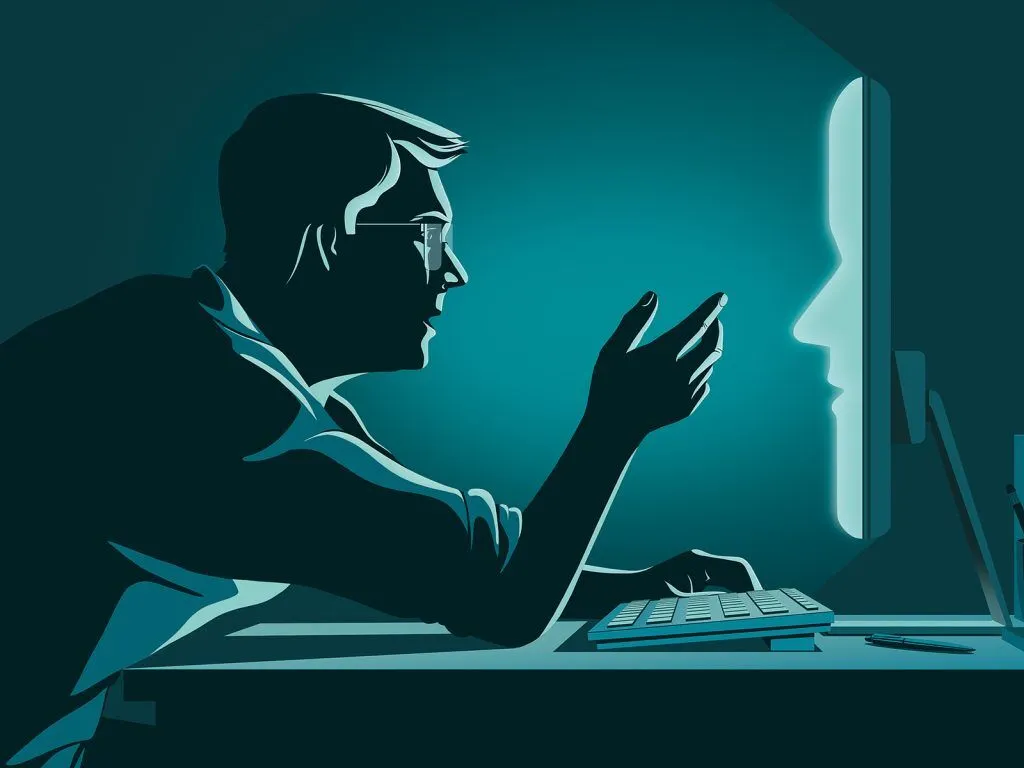
Image Source: Dribble
Computer-generative or AI illustrations, a form of digital art driven by artificial intelligence (AI) algorithms, are created in real time, often in response to specific inputs or prompts. These illustrations combine abstract representations of shapes, textures, and colors, resulting in intricate and imaginative visuals. Widely used in gaming, entertainment, advertising, and scientific fields, AI-driven art plays a significant role in data visualization and various other applications.
While many current illustration trends draw inspiration from earlier artistic styles, the integration of AI into design is a relatively new development. As AI technology continues to advance, we can expect a rise in artwork that is either entirely AI-generated or heavily influenced by AI. Artists may guide the AI to create specific scenes or start with simple shapes, only to see more complex and detailed designs emerge. The field of visual AI is rapidly evolving and is poised to take on new and innovative forms shortly. This is just the beginning of its vast potential.
13. Patterns:

Image Source: Vecteezy
An illustration pattern involves the repeated arrangement of shapes, lines, or textures within an artwork, improving its visual appeal and thematic depth. These recurring elements such as colors, geometric forms, or motifs help convey specific emotions or messages to the viewer while establishing coherence and flow within the composition. Various styles of illustration patterns, including geometric, floral, animal prints, and abstract designs, are prominent in contemporary drawing trends and diverse artistic styles.
Patterns in illustrations go beyond mere decoration they play a crucial role in shaping the visual narrative. Whether used to add dynamism or create a backdrop with brand-specific colors, patterns bring energy to spaces, draw positive attention, and serve as versatile brand assets across multiple applications. Their adaptability allows them to integrate into everything from digital media to physical products, making them a powerful tool for storytelling and brand identity.
14. Micro Animation:
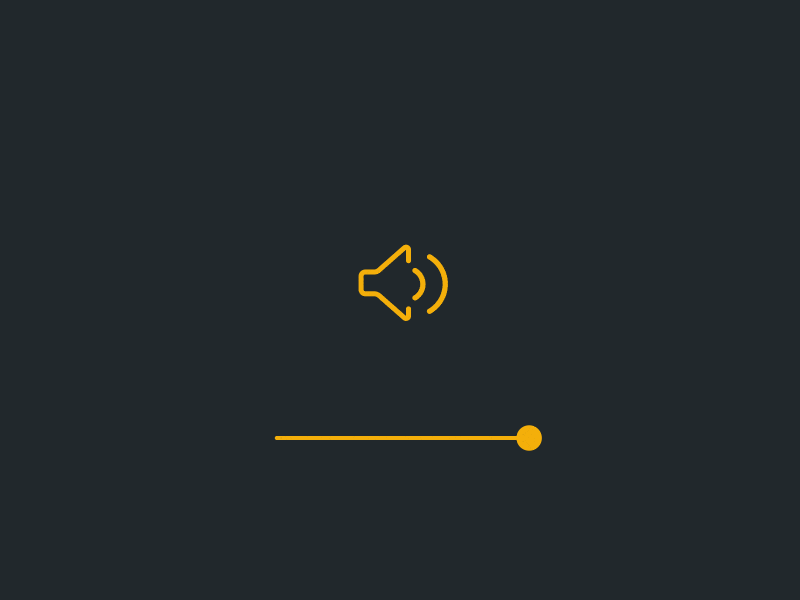
Image Source: Dribble
Micro animation illustration is a modern style that incorporates small, animated visuals within digital content such as websites, videos, or applications to boost interactivity and engagement. These animations serve multiple purposes, from specific elements on a webpage to providing user feedback during interactions or simply infusing the content with a sense of movement and liveliness. They come in a variety of styles, ranging from minimalist motion graphics to more detailed character-driven animations, and are typically created using tools like Adobe After Effects, Toon Boom Harmony, or similar animation software.
Despite their small size, these animated snippets play a significant role in capturing attention quickly, drawing users into the narrative, or delivering a message efficiently. They are strategically used to guide users on websites or momentarily pause their browsing experience, and improve usability and engagement.
As the digital world increasingly prioritizes user experience, micro animations have become essential. This style seems almost custom-designed for today’s shrinking attention spans, making it highly effective for capturing fleeting interest. They are particularly popular on platforms like Instagram, TikTok, and Dribbble, proving to be a smart choice for engaging audiences on these fast-paced social channels.
15. Comic Book:
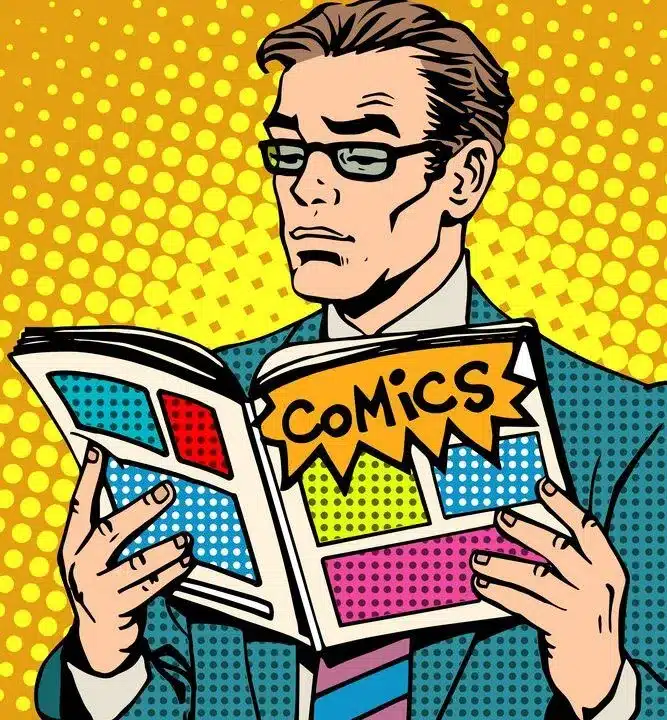
Image Source: Vector Stock
Comic art is built on essential elements like perspective, angles, the depiction of key moments, and speech bubbles, which are fundamental to nearly every comic book. Within this creative space, a variety of illustration techniques are employed, each with its distinct style and approach. These include penciling, inking, coloring, and digital illustration.
Penciling starts with an initial sketch while inking refines and defines the outlines using ink. Coloring can be done traditionally with tools like markers or digitally using specialized software. Additionally, techniques such as photo manipulation and collage involve layering images to create the final artwork. The diverse illustration styles used in comic books play a crucial role in shaping the tone and mood of a story, with artists selecting techniques that align with their vision and the narrative’s requirements. This versatility makes comic art highly relevant in the book illustration services.
16. Escapism:
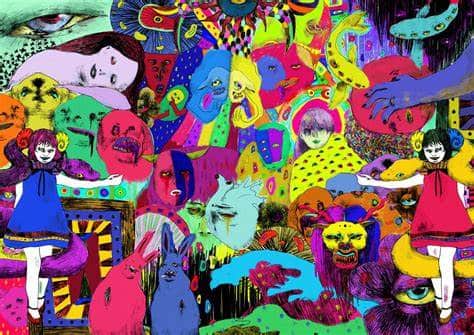
Image Source: Theaoi
One of the engaging illustration art styles is the art of Escapism, which presents works that allow viewers to step away from their daily routines and immerse themselves in a world of delightful distractions.
Escapism, a prominent theme in illustrations, focuses on creating settings that are fantastical and otherworldly. Artists unleash their boundless imagination, creating visuals that transport the human mind to alternate realities, encouraging it to wander and explore. This whimsical, dreamlike quality defines the Offbeat style, which became a source of solace for many during the pandemic.
Faced with the challenges of confinement, numerous designers turned to their creative outlets, diving into imaginative worlds as a form of refuge. Escapism thrives on surreal, reality-detached settings, giving artists the freedom to design extraordinary landscapes and scenarios. These illustrations act as an invitation, encouraging viewers to step into and temporarily lose themselves in the artist’s imaginative universe.
17. Doodle:
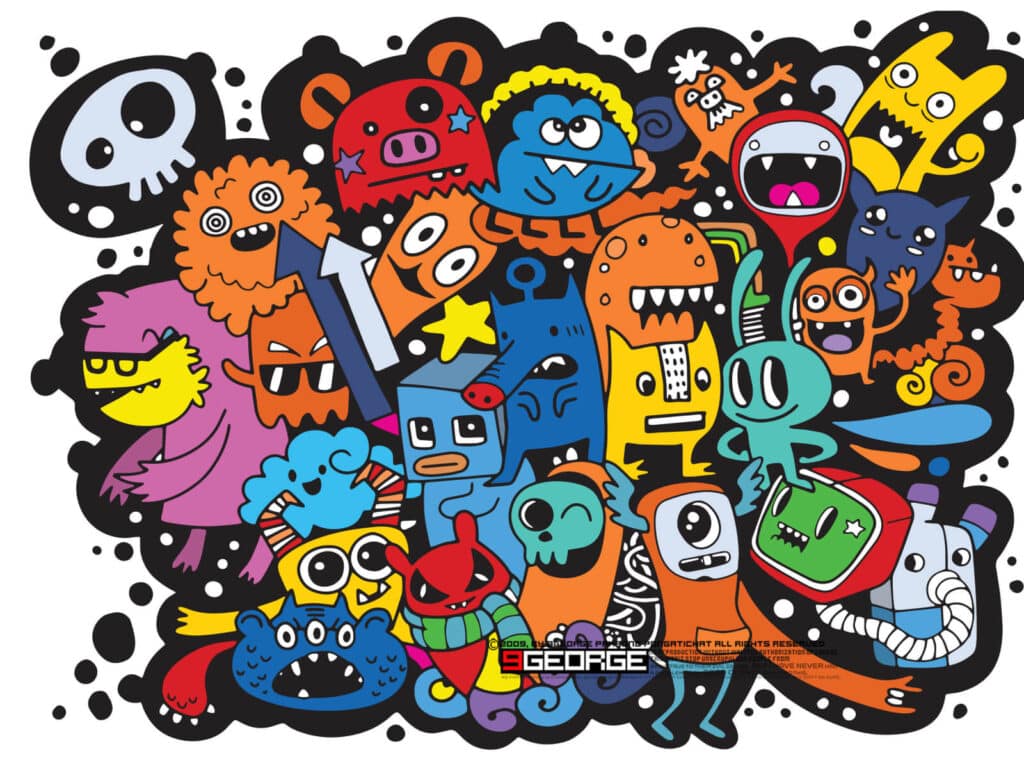
Image Source: Doodle Cute Monster
Doodles celebrate imperfection and rawness, embodying a move toward authenticity and individuality in 2024. They infuse designs with a sense of whimsy and playfulness, resonating with audiences craving emotional connection.
For website and app illustrations, use doodles to make user interfaces feel warm and inviting. In social media content, leverage quirky, relatable visuals to break through the noise of overly polished posts. Incorporate a personal, hand-drawn aesthetic into marketing materials like brochures, presentations, and packaging to create a memorable impression. For editorial illustrations, adopt a lighthearted and engaging doodle style to complement articles and blog posts, making them more visually appealing and approachable.
Design Never Stops Evolving and Innovating
In the ever-changing landscape of recent years, our lives have been reshaped by profound transformations, altering the course of design trends. Within the sphere of graphic design, this evolution stands as a testament to the continuous rhythm of creative expression.
Timeless styles have reemerged, blending effortlessly with modern aesthetics, while the rise of innovative technologies such as 3D and AI has a new creative potential. Navigating this rapid tide of change highlights the importance of staying connected to illustration trends, a journey often driven by the search for inspiration.
this dynamic design environment, these trends act as guiding stars, offering limitless opportunities for artists, designers, and creatives alike. Whether you’re drawn to the charm of retro nostalgia, captivated by the dreamlike quality of surrealism, or intrigued by the vibrant energy of micro animations, each trend provides a blank canvas for your unique artistic voice.
In the world of illustration, the process is just as meaningful as the outcome. The trends we have today will shape the visual narratives of tomorrow, creating aesthetics that engage audiences and evoke a wide range of emotions. As you explore the ever-evolving world of illustration, may these trends spark your creativity, inspire bold experimentation, and guide you in creating visuals that resonate deeply. See these trends not just as styles, but as opportunities on an artistic journey, uncovering new possibilities and bringing engaging visual stories to life. Here’s to a year filled with creativity and inspiration.
Frequently Asked Questions (FAQ’s)
Why are illustrations important for branding and marketing?
Illustrations play a crucial role in shaping a brand’s identity by conveying emotions and messages visually. They can make a brand stand out, engage audiences more effectively than photos, and create a unique, memorable identity. Illustrations also allow for boundless creativity, enabling brands to communicate complex ideas simply and engagingly.
How do illustration trends impact consumer perception?
Illustration trends help tap into the emotional responses and preferences of consumers. By adopting popular styles, brands can stay relevant and connect with their target audience on a deeper level. Trends such as nostalgia or modern 3D design evoke specific feelings that can influence how consumers view a brand and its products.
What is the benefit of using vector illustrations?
Vector illustrations are scalable, meaning they can be resized without losing quality. This makes them ideal for a variety of uses, from small icons to large billboards. Additionally, vector illustrations allow for fine-tuned customization, ensuring a unique and professional look for any project.
What are some of the most popular illustration trends for 2025?
Some of the most notable trends for 2025 include:
- Vintage and Retro: Drawing inspiration from past decades, particularly the early 20th century.
- Psychedelic: Colorful, abstract designs inspired by the 1960s counterculture.
- Cartoons: Bold, playful, and humorous character-driven illustrations.
- Realism and Surrealism: Detailed, lifelike portrayals mixed with dreamlike, otherworldly imagery.
- 3D Animation: Adding depth and interactivity to illustrations through three-dimensional design.
How can I incorporate illustration trends into my business strategy?
To integrate illustration trends into your business strategy, consider the emotional response each trend evokes. For example, nostalgia-driven designs can appeal to certain demographic groups, while modern 3D illustrations may attract younger, tech-savvy consumers. Choose trends that resonate with your target audience and align with your brand’s message.
What tools are used to create 3D illustrations?
With technological advancements, tools like Spline and Womp have made it easier to create 3D illustrations directly within web browsers. These tools allow designers to experiment with 3D models, textures, and animation in a user-friendly environment, even without extensive 3D design expertise.
How can cartoons be used in business or branding?
Cartoons inject personality, humor, and relatability into a brand’s visual identity. They are particularly effective for simplifying complex ideas, making content more accessible, and humanizing a brand. Cartoon illustrations can help create a more friendly and approachable image for businesses.





